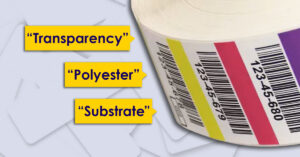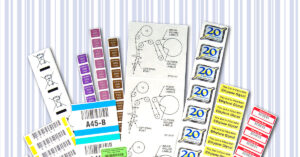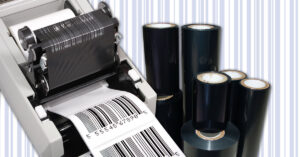In order for labels to move through a label printer, the printer mechanism relies on label sensors that detect a gap, notch, slot or line between labels. In identifying the material, the mechanism then adjusts the stock intake so that print properly aligns on each label.
Theses sensors work based on the concept that a label will block light going between two sensors while a gap does not block the light. It’s almost like flipping a light switch on, off and then on again.
> Want a more condensed version? Check out this infographic!
Label Gap
Between each die cut label, material is typically stripped away leaving behind what is called a “label gap.” The carrier or liner supporting the label is usually less opaque than the label and liner together. Special transmissive sensors read the opacity changes where one label ends and a new label begins. Label gaps are commonly 0.125” (1/8th inch) tall although they can be virtually any size you want. EIM tries to limit the size of a label gap to avoid wasting material and raising costs, but sometimes, due to automatic application equipment, label perforations and other engineering, gaps have to be larger than normal.
If there is not enough contrast between a label and its liner, then not enough light will pass through for the printer to find its “top-of-form”. Sometimes you can recalibrate the sensors to adjust to a new liner; otherwise you will have to choose another way to detect your labels:
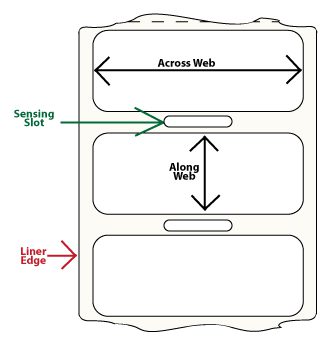
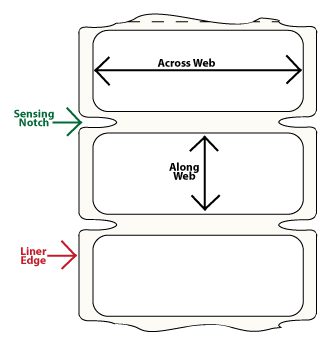
Sensing Slot or Notch
To create more contrast you may need slots or side notches cut in the liner. Before deciding whether to use slots or notches, you will need to determine whether your sensors are “fixed” and locked into one position or if they are “movable.” Fixed sensors are commonly located either at the very edge of a label or in the center. Movable sensors can be located anywhere across the web to give you much more flexibility as to where you can locate your cut outs.
Sensing slots are narrow oval holes often centered in the liner between labels. They usually require larger-than-normal label gaps. Trying to cut and remove a tiny slot from a normal 0.125” gap is difficult, especially if you also have perforations between labels. EIM usually recommends increasing a slot gap with a minimum of 0.25”.
Sensing notches are cut out at the edge of the liner and may not require a larger gap. Not only are notches used with labels on brown or highly opaque liners, but also when working with tag materials that have no liner or label gap. This explains why you often see hang tags with perforations between each tag and four rounded corners that create those notches.
The size, shape and location of a sensing slot or notch is dependent on your printer specifications. Slots and notches will require special cutting tools. Subject to the size of your label gap, you may also need a new label tool which adds to your initial investment but will make your label printing much easier.
Black Mark
Some label printers may also have a “reflective” sensor that relies on black lines or marks printed on the back of the label liner. The width of the black mark is synchronized with the label size to tell the printer when to print label to label. Black marks are particularly useful when labels or tags are “butt cut” and separated only by a perforation or face cut. Since we will have to print the black marks for you, this method does add a bit to your supplies cost.
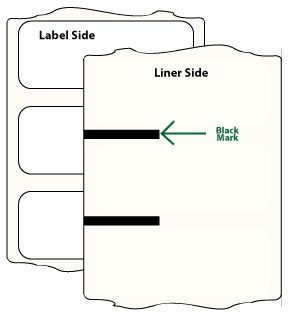
NOTE: Black marks, sensing slots or notches are usually necessary when printing clear labels where there is absolutely no contrast between the labels and liner. EIM does offer special printing on clear labels to provide a solid print area and sufficient contrast to calibrate your labels without liner marks or holes. We can add this to any clear label material.
If you have any questions on how to design your label so it will properly run in your label printer, don’t hesitate to contact The Label Experts to discuss your label design requirements.


